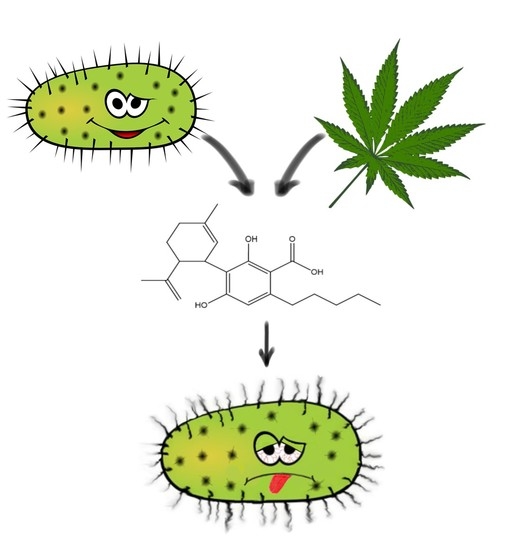 “Current antiepileptic drugs (AEDs) are undesirable for many reasons including the inability to reduce seizures in certain types of epilepsy, such as Dravet syndrome (DS) where in one-third of patients does not respond to current AEDs, and severe adverse effects that are frequently experienced by patients.
“Current antiepileptic drugs (AEDs) are undesirable for many reasons including the inability to reduce seizures in certain types of epilepsy, such as Dravet syndrome (DS) where in one-third of patients does not respond to current AEDs, and severe adverse effects that are frequently experienced by patients.
Epidiolex, a cannabidiol (CBD)-based drug, was recently approved for treatment of DS. While Epidiolex shows great promise in reducing seizures in patients with DS, it is used in conjunction with other AEDs and can cause liver toxicity. To investigate whether other cannabis-derived compounds could also reduce seizures, the antiepileptic effects of CBD, Δ9-tetrahydrocannabinol (THC), cannabidivarin (CBDV), cannabinol (CBN), and linalool (LN) were compared in both a chemically-induced (pentylenetetrazole, PTZ) and a DS (scn1Lab-/-) seizure models.
Cannabidiol (0.6 and 1 μM) and THC (1 and 4 μM) significantly reduced PTZ-induced total distance moved. At the highest THC concentration, the significant reduction in PTZ-induced behavior was likely the result of sedation as opposed to antiseizure activity.
In the DS model, CBD (0.6 μM), THC (1 μM), CBN (0.6 and 1 μM), and LN (4 μM) significantly reduced total distance traveled. Cannabinol was the most effective at reducing total distance relative to controls. In addition to CBD, other cannabis-derived compounds showed promise in reducing seizure-like activity in zebrafish.
Specifically, four of the five compounds were effective in the DS model, whereas in the PTZ model, only CBD and THC were, suggesting a divergence in the mode of action among the cannabis constituents.”
https://pubmed.ncbi.nlm.nih.gov/32585475/
“In the DS model, CBD, THC, CBN, and LN caused significant reduction in seizure behavior, while THC and CBD were effective in both models.”
https://linkinghub.elsevier.com/retrieve/pii/S1525505020303310

 “Cannabidiol (
“Cannabidiol ( “The phosphatidylinositol 3-kinase (PI3K)/protein kinase B (PKB/Akt)/mechanistic target of rapamycin (mTOR) signaling pathway has been associated with several pathologies in the central nervous system (CNS), including epilepsy. There is evidence supporting the hypothesis that the PI3Kγ signaling pathway may mediate the powerful anticonvulsant properties associated with the cannabinoidergic system.
“The phosphatidylinositol 3-kinase (PI3K)/protein kinase B (PKB/Akt)/mechanistic target of rapamycin (mTOR) signaling pathway has been associated with several pathologies in the central nervous system (CNS), including epilepsy. There is evidence supporting the hypothesis that the PI3Kγ signaling pathway may mediate the powerful anticonvulsant properties associated with the cannabinoidergic system. “Cannabidiol (
“Cannabidiol ( “Cannabinoids are the chemical compounds with a high affinity for cannabinoid receptors affecting the central nervous system through the release of neurotransmitters. However, the current knowledge related to the role of such compounds in the regulation of cellular aging is limited. This study aimed to investigate the effect of cannabidiol and tetrahydrocannabinol on the function of aged pancreatic islets.
“Cannabinoids are the chemical compounds with a high affinity for cannabinoid receptors affecting the central nervous system through the release of neurotransmitters. However, the current knowledge related to the role of such compounds in the regulation of cellular aging is limited. This study aimed to investigate the effect of cannabidiol and tetrahydrocannabinol on the function of aged pancreatic islets. “The emergence of multi-drug resistant bacteria such as methicillin-resistant Staphylococcus aureus (MRSA) causes a major threat to public health due to its limited therapeutic options.
“The emergence of multi-drug resistant bacteria such as methicillin-resistant Staphylococcus aureus (MRSA) causes a major threat to public health due to its limited therapeutic options.
 “Moderate to severe spasticity is commonly reported in Multiple Sclerosis (MS) and its management is still a challenge. Cannabinoids were recently suggested as add-on therapy for the treatment of spasticity and chronic pain in MS but there is no conclusive scientific evidence on their safety, especially on cognition and over long periods.
“Moderate to severe spasticity is commonly reported in Multiple Sclerosis (MS) and its management is still a challenge. Cannabinoids were recently suggested as add-on therapy for the treatment of spasticity and chronic pain in MS but there is no conclusive scientific evidence on their safety, especially on cognition and over long periods. “Identifying candidate drugs effective in the new coronavirus disease 2019 (Covid-19) is crucial,
“Identifying candidate drugs effective in the new coronavirus disease 2019 (Covid-19) is crucial,